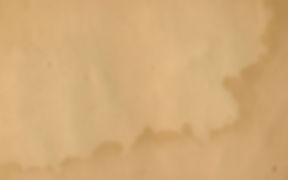
BLACK MOUNTAIN COMPLEX PETROGLYPHS
Recovering Indian history from ancient Native American rock writings.
Introduction:
For years academics and scholars have been recording and interpreting petroglyphs. They call the glyphs “art” because they cannot determine the meanings of the various figures and representations inscribed upon the rocks by ancient people. The concept that we cannot prove the petroglyphs are ancient writings, because we cannot speak to the authors is misleading and outdated. In fact, the authors of the petroglyphs left behind clues of their 'intent' to record monumental events, making the petroglyphs 'written' records of Native American historical events which pre-date the arrival of Columbus.
The following materials were extracted from my research notes and are intended for public distribution, but do not provide a comprehensive explanation of petroglyphs, pictographs, intaglios, 'geoglyphs' or other representations of events in Native American history. The materials are intended to provide only a brief overview of the Black Mountains Complex and explain some of the unique data that can be extrapolated from the rock writings, relevant to pre-Columbian Native American history.
In her opening statement of an article, “Fresh vandalism and theft reported at petroglyph site” (April 29, 2010) by a staff writer, Jessica Cejnar, of the Desert Dispatch in Barstow, California succinctly stipulates the problem associated with the Complex, “The only security system that protects it is secrecy and a harsh landscape”, referring to Inscription Canyon and the petroglyphs inscribed upon its walls. The security problem does not apply only to Inscription Canyon. It applies to the entire complex. The entire mountain complex is a Native American text book on an event which may have actually occurred five to seven thousand years ago.
The entire Black Mountain Complex is unique. The placement of thousands of petroglyphs, at forty-six sites throughout the complex suggests that the layout of the petroglyphs was by design and managed for a specific purpose. It is conjectured that the petroglyphs document the events of a battle between the proto-Hokan and proto-Uto-Aztecan speaking people; along with their respective allies. One glyph appears to stipulate that the Uto-Aztecan army consisted of twenty-six separate groups, another suggests that both armies consisted of as many as six thousand warriors. A combined total of twelve thousand active participants.
There are several unique, original concepts and theories that the author has developed after fourteen years of field research. Among, but not limited to, these unique concepts and theories are:
-
That five-to-seven thousand years ago two Native American groups fought a long, protracted war over the control of the Mojave Desert, Southern California, the Great Basin and the American Southwest.
-
That the petroglyphs within the Complex document the final battle of that war.
-
That two scaled replicas of the battlefield were manufactured by human hand.
-
That the design and layout of the 46 petroglyph sites are not random, but were designed, developed and managed over hundreds of years in order to create a memorial for those who gave their lives in the monumental struggle between people.
-
That the intent of the petroglyph authors can be established by the rock faces upon which the petroglyphs are inscribed, due to their resemblance to associated terrain features.
-
That many of the symbols, while they appear to be different, mean the same thing in different languages and/or dialects.
-
That some petroglyph clusters within the Complex suggest a rudimentary syntax which can be translated by terrain association.
-
That many phallic symbol interpretations originate from an actual terrain feature within the Complex and represent the mountain spur, not a penis.
-
That the two original warring groups of Native Americans can be identified by language; Uto-Aztecan and Hokan.
-
That petroglyphs were produced primarily by Uto-Aztecans and pictographs were produced primarily by the Hokan.
-
That there are additional recordings of the same battle that have been produced in remote locations throughout California, the Great Basin and the American Southwest.
-
That the Barstow Tortoise Intaglio was a spring time gathering place for various groups of Native Americans descended from the original survivors of the war prior to participating in periodic mourning and/or memorial ceremonies conducted in the vicinity of Inscription Canyon,
There may be another thirty or forty year’s worth of field research to conduct before we can understand all the minor nuances of the petroglyph symbols, but first we must protect the petroglyphs from these reoccurring attacks. We cannot study what has already been destroyed, but we can preserve what remains:
The President should declare the entire complex a National Monument.
The purpose of this site is to inspire awareness, preservation and research of all rock art/writings. As the site grows and develops, it is hoped that YOU will help in these efforts by submitting questions, comments and suggestions: Our primary means of communication is the 'Contact' button above.
© 2023 by My site name. Proudly created with Wix.com